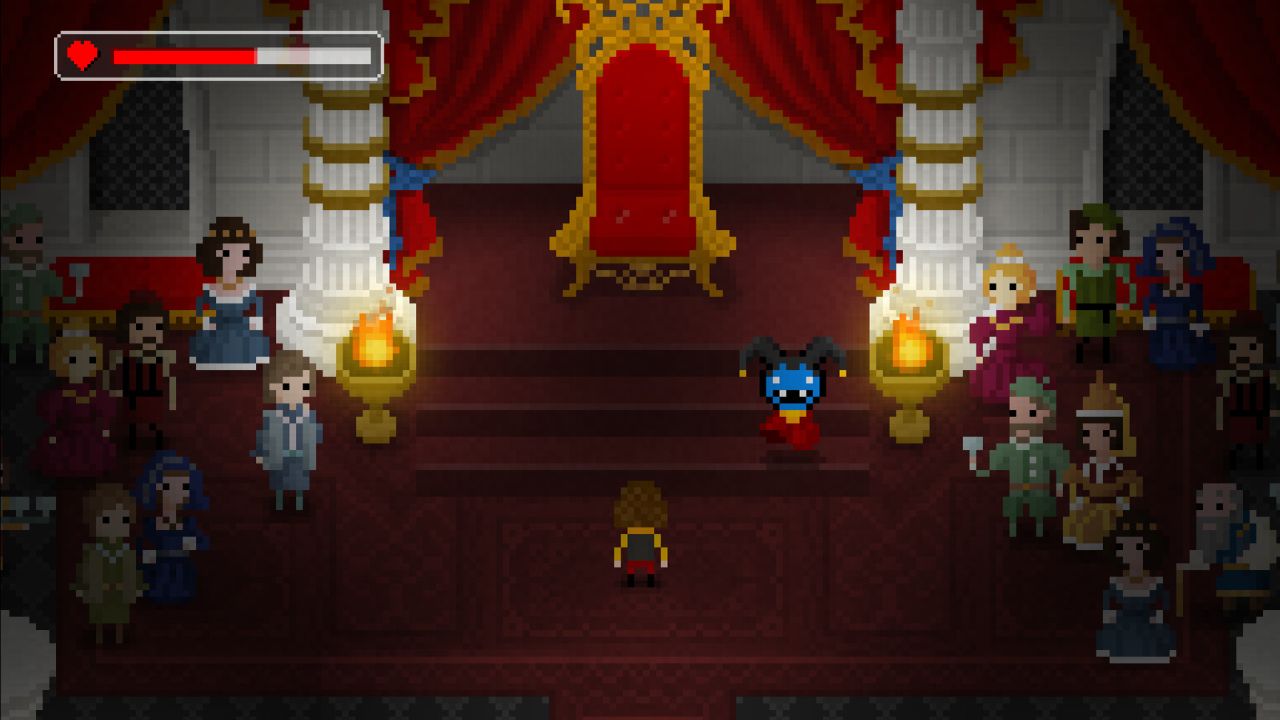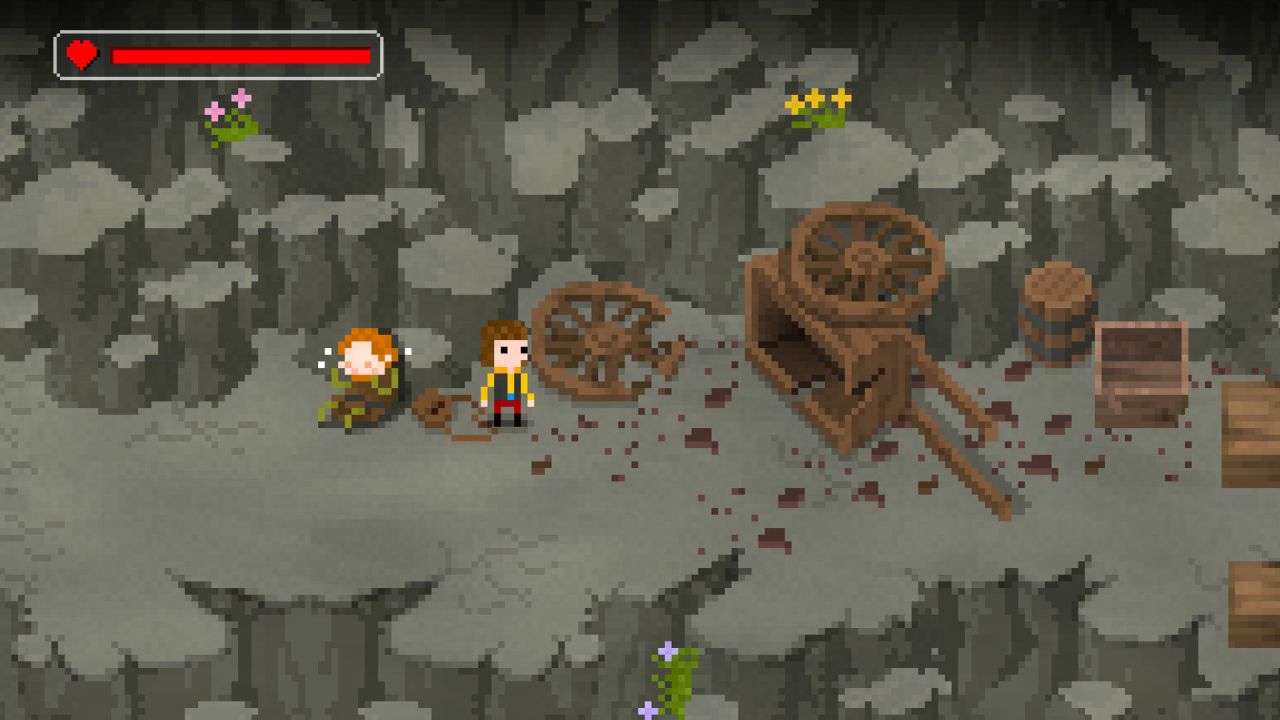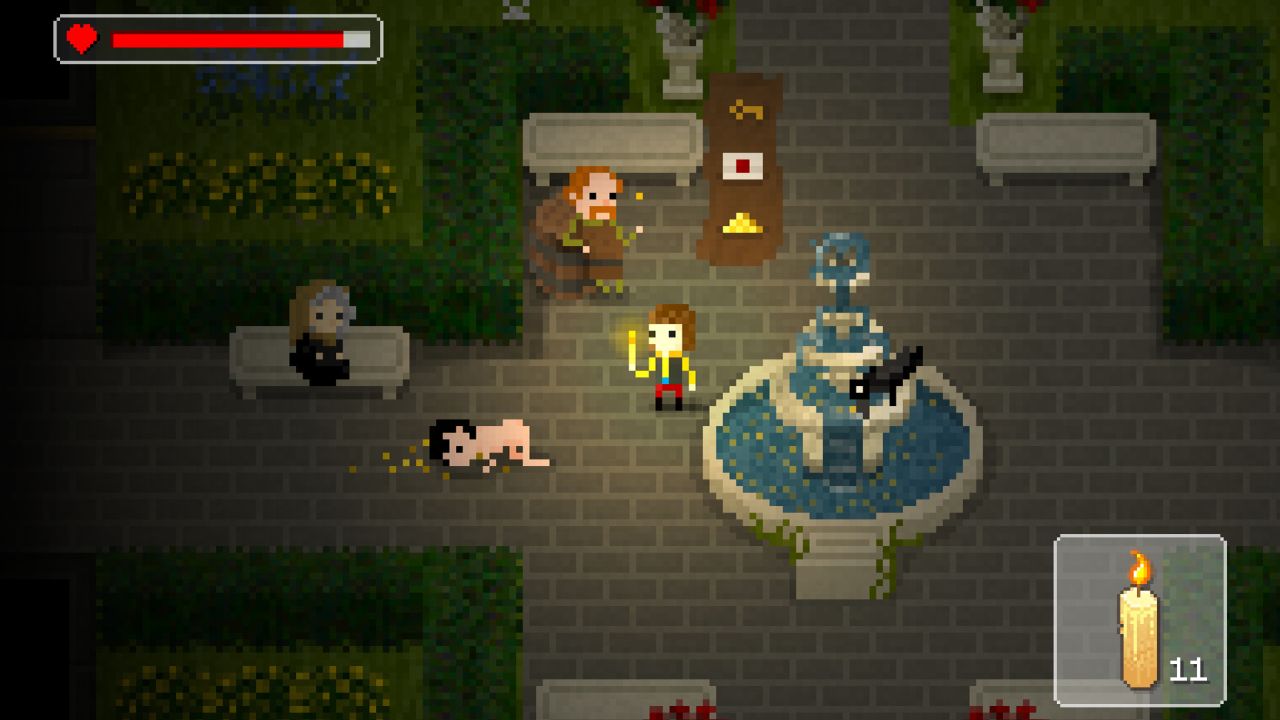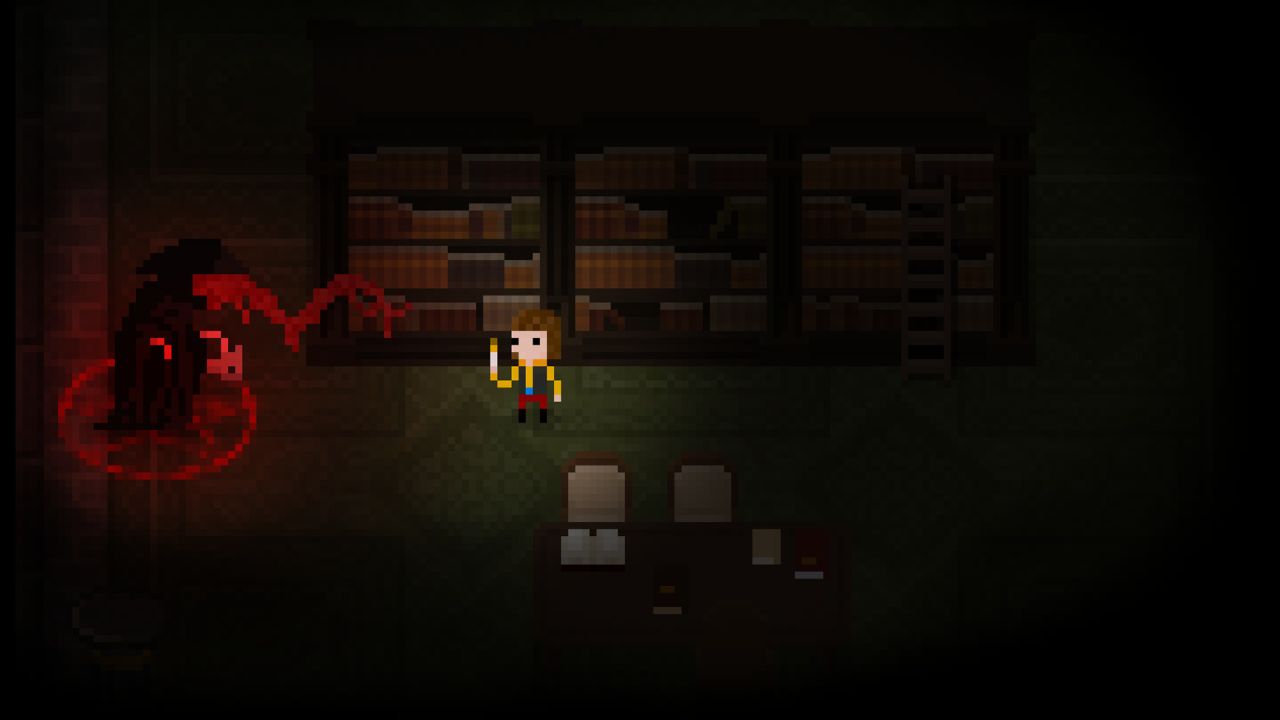The Count Lucanor Review
A folk-tale, in the guise of an adventure-RPG
The pejoratively named jump scare has become something of a horror convention. Beyond the menu screen of the next big scary game, a minor cardiac arrhythmia has come to be expected; something that - if anything nowadays - rather defeats the point. Lesser-worn is Gothicism, and understandably so. It's difficult to pull off effectively. Dark Souls, Silent Hill and even The Legend of Zelda are amongst the atmospheric few that've strode that psychological footpath, and whilst it's true that The Count Lucanor exists as an ensemble of these titles, Baroque Decay Games offer an homage that is both overt and mature in a foreboding adventure-RPG with a uniquely classical art style.

The Count Lucanor draws its first breath however, from the classic folk novel. Overlooking a pleasantly Zelda-esque countryside, you play as Hans, a just-turned-ten pauper who's been living in poverty since his father vanished to war. Thoroughly discontented with his lack of birthday presents, he decides to leave home in search of his fortune. His mother, who doesn't see point to argue with her son, instead arms him with some paltry supplies to aid him on his travels.
Not long after embarking on your character-defining quest, you'll encounter numerous strangers whose misfortune have left them poor or undernourished. You can choose whether or not you hand over your goods, or keep them for yourself, but it's these early exchanges that mark The Count Lucanor's seismic shift from quaint, storybook adventure to full-on gothic horror. The young protagonist faints after a drunken encounter with a wayfaring (yet irreverently irresponsible) shepherd, awakening upon a world much changed. Once sparkling rivers now run thick with blood, and maddened bipedal goats stalk the plains for human flesh. It's additionally so dark that only immediate surroundings can be seen, illuminated dimly by candlelight.
Escaping, Hans is met by a mischievous spirit known only as 'The Kobold', who leads him to Castle Tenébre; home to an illustrious Count who is ever-so-conveniently in search of a noble heir to inherit his voluminous wealth. To prove your worth, you're tasked with finding out the ethereal Kobold's name; the Rumpelstiltskin-sprung basis for The Count Lucanor's puzzle elements. The main quest involves retrieving letters hidden around the castle that spell the Kobold's name, in order to pass the test and earn Hans big bucks. Much of the game's exploration exists openly in the vein of Zelda, with puzzles ranging from simple push-block challenges to code-deciphering to excavating complicated passages. Letters lay locked behind a selection of colour-coded doors, which generally take the form of specifically-themed dungeons. One room, for example, is pitch-dark and hazardous, whilst another is engulfed in procedurally-timed flames. That one's hazardous too. They're all really rather hazardous.

Puzzles are often elongated over multiple rooms, some of which need special items to access. Travails through booby-trapped labyrinths are less often rewarded with straight-up letters than they are with tools and trinkets that'll somehow guide you to your prize later on. Singly straightforward quests segue together into satisfying complexity, contributing a thrilling sense of mystery to the castle's archaic angst. Occasionally conundrums feel drawn out, as backward-and-forwarding is common and repetition nigh on unavoidable. However, puzzles are neither obscure nor patronising, and - like Zelda - more often had me grinning when I'd sussed out where I was headed next.
There are other gothic triumphs also sniffable in the mix. In place of Resident Evil's ink ribbons, Lucanor requires you to sacrifice some of your gold in order to save your progress, whilst the interface itself brings Dark Souls to mind, even hijacking the mocking 'YOU DIED' screen that has since become feared in itself. Similar still is the escapable 'safe zone' - a plaza that allows you to save locals. Their cynical, mysterious tendencies are vaguely echoic of Bloodborne, but Lucanor mostly takes care to ensure it doesn't read as a rip-off. Between the hooded hag and her naked, corn-adoring son and the friendly severed head carted around by a pair of satanic goats, The Count Lucanor reserves its own sense of character, balancing a bizarre humour amidst its daunting atmosphere. Each character develops as you interact with them, offering glimpses of Tenébre's history and questioning the intentions of others. Who to trust and what to believe becomes gradually more disturbed, and whilst none of these interactions are mandatory, they lend depth to the game's fable-like plot.

Exploration of the castle's main complex offers some respite between puzzle segments, but it's far from a cheerful holiday. At first, the entire castle is pitch-black, illuminated only by the paltry candle in Hans' possession. Additional candles can be picked up on your letter-hunting travails, and placed down on the ground as nifty beacons to guide you later. Candles here burn infinitely, but as there are only ever just enough to cast a modest glow, I often found myself scurrying tentatively across longer stretches of darkness.
Tenébre's shadowy, candle-lit halls are disquietingly reminiscent of Amnesia and Silent Hill, but retain a baroque sense of style that is very much Lucanor's own, and reflected dramatically by each of its ghoulish inhabitants. There are skeletal scholars that try to vacuum you up with lurching tentacle tongues, and notorious Italian Chamberlains with (quite literal) death stares. Despite his brazen attitude, Hans is no fighter, and as such running into something ghastly usually precedes either running or hiding. As long as you're a diligent candle-placer, they're generally easy to outrun, but their ability to pull your mortal body towards them makes close encounters veritably hair-raising. The tricorned servants deal weighty damage - killing in around four hits - but are easily recovered from provided you've some food stocked up. One particularly ominous baddie, however, can end your game in one. Whilst his footsteps are announced formidably as he approaches, if he sees you the jig is up, meaning much of my time in Castle Lucanor was spent playing Grandma's footsteps as I dived beneath tables and behind bookcases to avoid being spotted- a survival-horror tribute to Silent Hill; a secondary nod to Outlast.

Yet the real sense of threat is derived from their ability to remain just out of sight. Entry into undiscovered passages is made all the more terrifying by the incoherent murmurs of those that lurk, and the first blind amblings into unlit territory are often the tensest in the game.
Perhaps it's this macabre, slow-burning tone that makes the game's visual choices all the more striking. The cutesy 8-bit art style might be all the rage nowadays, but it can lack purpose outside the aesthetic charm. Visuals in Lucanor are instead calculated and deliberate. Whilst gameplay is punctuated by beautifully detailed, pseudo-anime cutscenes, it's the fluttery in-game visuals that carry most of Lucanor's character. Castle ghosts quiver rather than glide; The Kobold jigs rather than drifts. Some of the NPC animations are so subtle they might've been mistaken for glitches had their jaggedness not contributed admirably to the game's weird humor. The Count Lucanor's approach to animation is rough yet purposeful, and accompanied by the castle's anonymous creaks and crackles, there's an uncertainty rooted deep in the game's heart that doesn't just add weight to its horror environments, but plays on the imagination.
Choices evoke similar moments of doubt. Lucanor draws most obviously from Undertale in that decisions aren't black and white, and all too often the larger impact of a choice lurks hidden beneath seemingly instantaneous effects. Whilst the similarity is there, however, The Count Lucanor takes a decidedly more egocentric approach concerning player choice. Rather than pummeling the heartstrings with the inherent vulnerability of others, make a mistake here and it'll most likely be your neck on the line. The game rewards you for making the effort, and despite the meat of the narrative remaining the same, there are deeper sinews to uncover behind Tenebre's castle walls. And like Undertale, it's best experienced in multiple playthroughs. Taking different actions, different pathways or even using items at different times can yield one of five endings - each equally suited to The Count Lucanor's grimly folkish narrative. New choices spawn new experiences, making the storyline all the richer for it, and though some encounters become tedious to replay, after the initial four hour tale concludes, there's plenty of reason to return.

The Count Lucanor isn't without its foibles, however. The lofty trills of Bach are translated into a nostalgic chipset soundtrack, and whilst it's an effective accomplice to the castle's folkish haught, the main theme can come off as tinny. Nigh on unbearable in the main menu, its sharp register borders a similar discomfort during pivotal dialogue segments, occasionally interrupting the otherwise haunting storytelling. There's also the occasional drop in frame rate to observe, but none of them are particularly abrasive. AI pathfinding can go a little skew-whiff at times, occasionally leaving the player trapped in hiding as enemies get caught on the surroundings. One particular instance gave way to five minutes of wangling my character around behind a curtain, whilst my tentacular-tongued pursuer flipped out on the other side. Whilst these are by no means game-breaking issues, they do slow the pace somewhat. That, and it's a little difficult to feel honestly uneasy when the source of the game's danger is relegated to twitchy glitch-fits.
The Count Lucanor may wear its gaming influences proudly on its sleeve, but its grimly gothic overtone predates the cyber world altogether. It's different in that it doesn't just communicate as a video game. The fidgety animations, weighted dialogue and winding adventure puzzles all play accordingly to classic, literary formulas, and ultimately instill an authentic sense of unease, whilst dodging the pangs of the cursory shock-value.
 Comments
Comments











